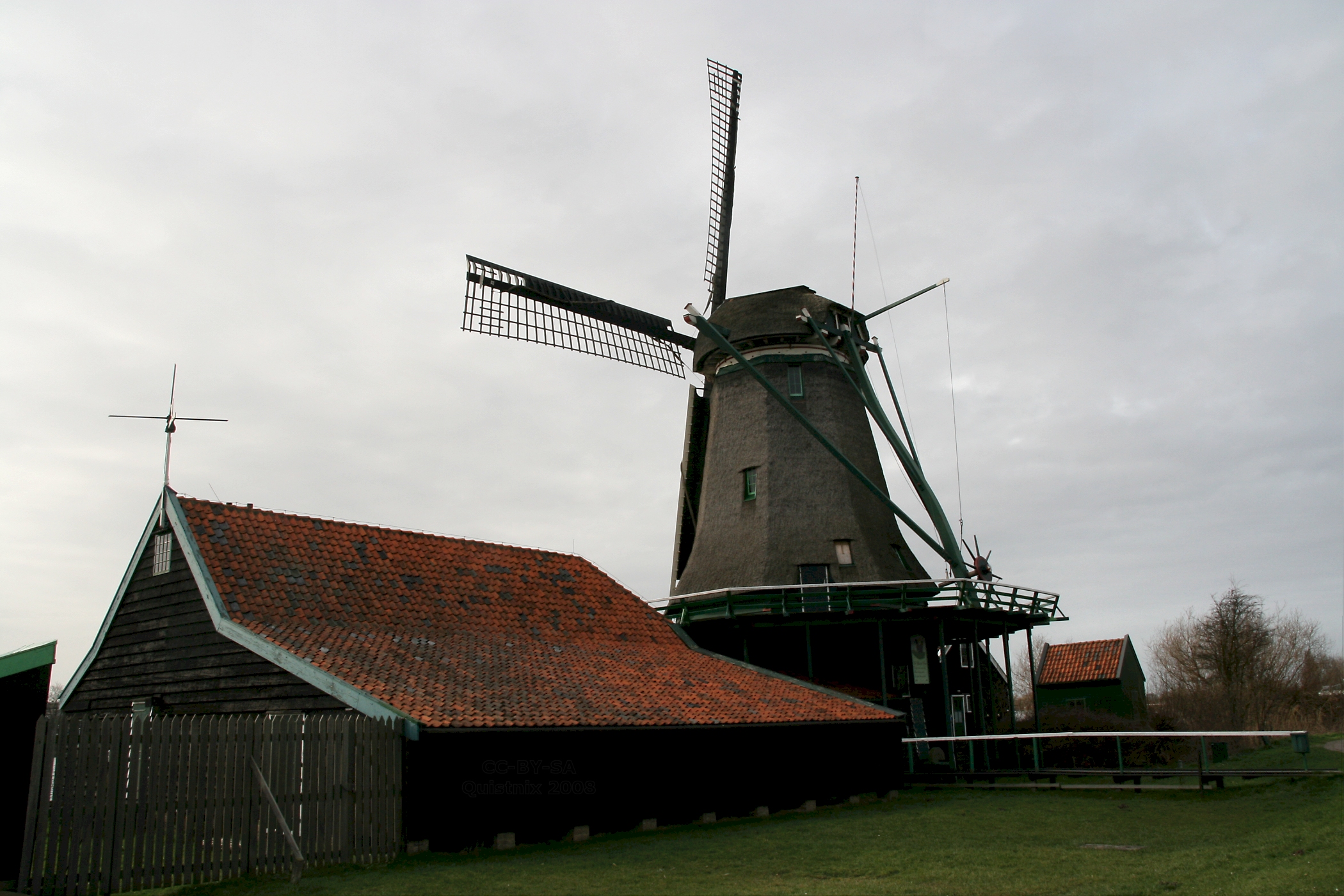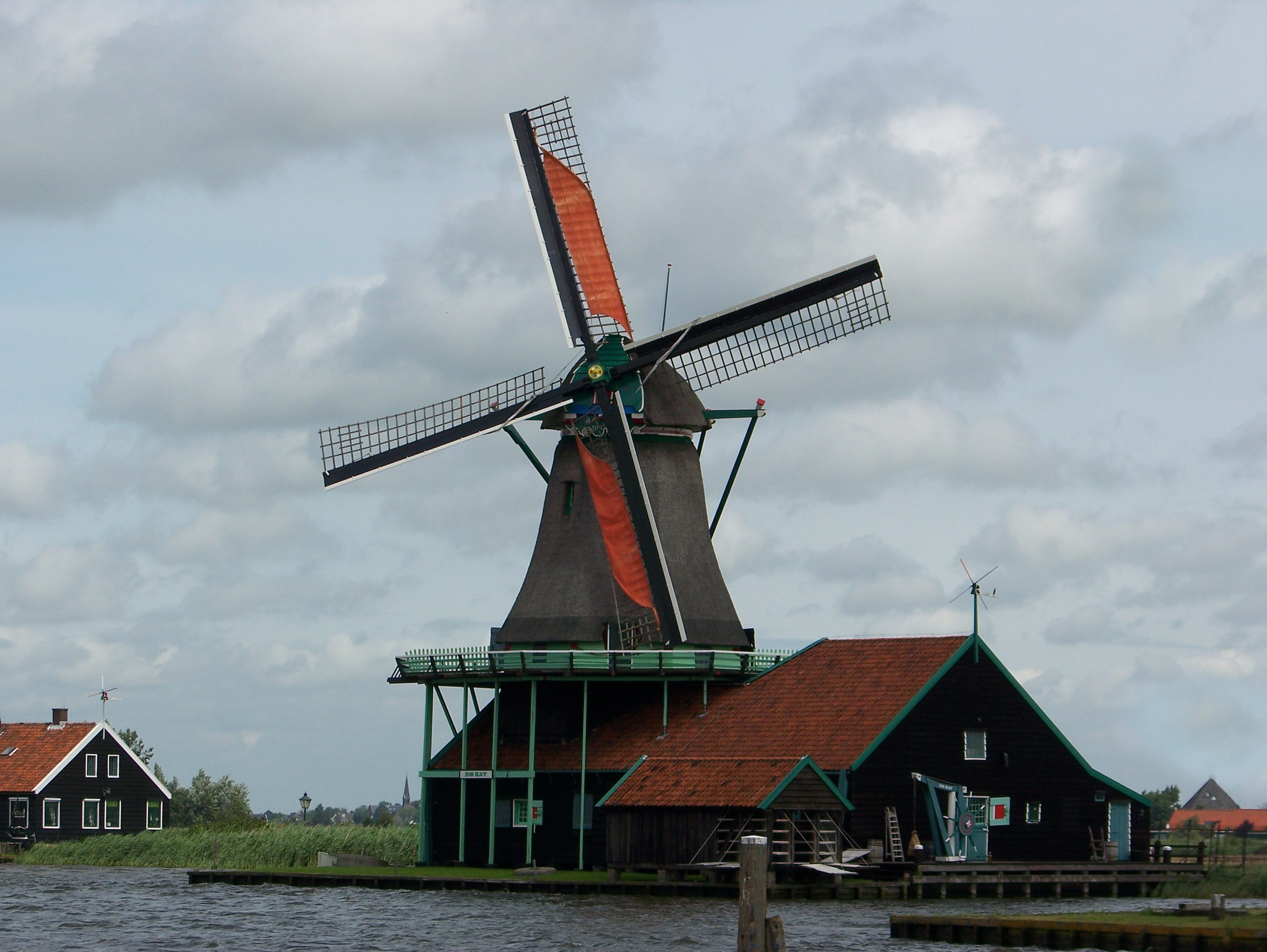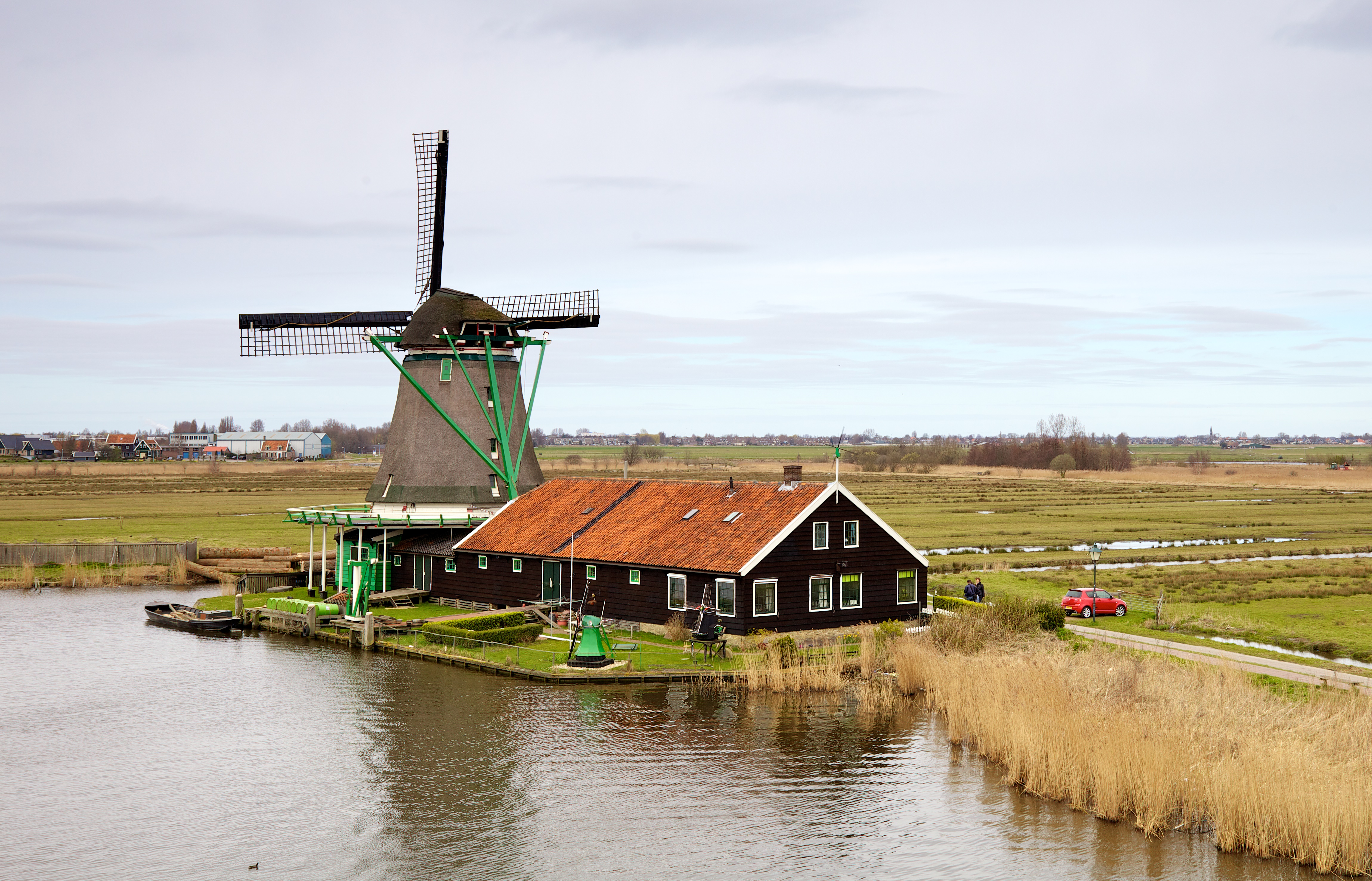|
De Bonte Hen, Zaandam
De Bonte Hen (''The Spotted Hen'') is the name of an oil mill, located in the Zaanse Schans, Netherlands. De Bonte Hen is the northernmost of the mills in Zaanse Schans. The original mill was built in 1693. It was rebuilt In 1935 and restored in 1975. Since then, the mill has been operated weekly on a voluntary basis. It contains original oil cellars for the storage of oil made at the mill. See also * De Gekroonde Poelenburg, Zaandam * De Huisman, Zaandam * De Kat, Zaandam * De Os, Zaandam * De Zoeker, Zaandam External links De Bonte Henat the website of the Zaanse Schans Zaanse Schans () is a neighbourhood of Zaandam, near Zaandijk, Netherlands. It is best known for its collection of windmills and wooden houses that were relocated here from the wider region north of Amsterdam for preservation. From 1961 to 1974, o ... De Bonte Henat the website of {{DEFAULTSORT:Bonte Hen Windmills in North Holland Populated places in North Holland Smock mills in the Nether ... [...More Info...] [...Related Items...] OR: [Wikipedia] [Google] [Baidu] |
Oil Mill
An oil is any nonpolar chemical substance that is composed primarily of hydrocarbons and is hydrophobic (does not mix with water) & lipophilic (mixes with other oils). Oils are usually flammable and surface active. Most oils are unsaturated lipids that are liquid at room temperature. The general definition of oil includes classes of chemical compounds that may be otherwise unrelated in structure, properties, and uses. Oils may be animal, vegetable, or petrochemical in origin, and may be volatile or non-volatile. They are used for food (e.g., olive oil), fuel (e.g., heating oil), medical purposes (e.g., mineral oil), lubrication (e.g. motor oil), and the manufacture of many types of paints, plastics, and other materials. Specially prepared oils are used in some religious ceremonies and rituals as purifying agents. Etymology First attested in English 1176, the word ''oil'' comes from Old French ''oile'', from Latin ''oleum'', which in turn comes from the Greek (''elaion'') ... [...More Info...] [...Related Items...] OR: [Wikipedia] [Google] [Baidu] |
Zaanse Schans
Zaanse Schans () is a neighbourhood of Zaandam, near Zaandijk, Netherlands. It is best known for its collection of windmills and wooden houses that were relocated here from the wider region north of Amsterdam for preservation. From 1961 to 1974, old buildings from all over the region known as the Zaanstreek were relocated using lowboy trailers to the Zaanse Schans. Two of the windmills in the Zaanse Schans are preserved in their original site where they were first constructed, and therefore don't make up part of the relocated structures. The Zaans Museum, established in 1994, near the first Zaanse Schans windmill, is located south of the neighbourhood. This architectural reserve for Zaanse timber construction is a protected village scene because of its architectural-historical and landscape value. It developed into an international tourist destination with several million visitors every year: in 2016, there were 1.8 million, in 2017 – 2.2 million. Etymology and history Zaanse Sc ... [...More Info...] [...Related Items...] OR: [Wikipedia] [Google] [Baidu] |
Netherlands
) , anthem = ( en, "William of Nassau") , image_map = , map_caption = , subdivision_type = Sovereign state , subdivision_name = Kingdom of the Netherlands , established_title = Before independence , established_date = Spanish Netherlands , established_title2 = Act of Abjuration , established_date2 = 26 July 1581 , established_title3 = Peace of Münster , established_date3 = 30 January 1648 , established_title4 = Kingdom established , established_date4 = 16 March 1815 , established_title5 = Liberation Day (Netherlands), Liberation Day , established_date5 = 5 May 1945 , established_title6 = Charter for the Kingdom of the Netherlands, Kingdom Charter , established_date6 = 15 December 1954 , established_title7 = Dissolution of the Netherlands Antilles, Caribbean reorganisation , established_date7 = 10 October 2010 , official_languages = Dutch language, Dutch , languages_type = Regional languages , languages_sub = yes , languages = , languages2_type = Reco ... [...More Info...] [...Related Items...] OR: [Wikipedia] [Google] [Baidu] |
De Gekroonde Poelenburg, Zaandam
De Gekroonde Poelenburg (''The Crowned Poelenburg'') is a paltrok mill in Zaandam, Netherlands which has been restored to working order. Like all Dutch ''paltrok mills'' it is a windpowered sawmill. The mill is listed as a Rijksmonument, number 40093. It is located at the Zaanse Schans in a group of several historic industrial windmills. History The history of ''De Gekroonde Poelenburg'' is rather complicated involving several distinct windmills. The first windmill on the original location of the first ''De Poelenburg'' in Zaandam-Oost was mentioned in 1733. It was named after its owner Pieter Jochemsz. Poelenburg. This mill burned down in 1903 and was replaced by a windmill from Koog aan de Zaan called ''De Locomotief'' (''The Locomotive'') which was renamed to ''De'' Gekroonde ''Poelenburg'' after the move. ''De Locomotief'' was newly built in Koog aan de Zaan in 1867 to replace the 200-year-old ''De Groene Jager'' (''The Green Hunter'') that had to be dismantled for the constr ... [...More Info...] [...Related Items...] OR: [Wikipedia] [Google] [Baidu] |
De Huisman, Zaandam
De Huisman is a small octagonal mill at the Zaanse Schans in the Zaanstad, and currently makes mustard Mustard may refer to: Food and plants * Mustard (condiment), a paste or sauce made from mustard seeds used as a condiment * Mustard plant, one of several plants, having seeds that are used for the condiment ** Mustard seed, seeds of the mustard p .... 'De Huisman' has been located on the Zaanse Schans since 1955, next to the warehouse 'De Haan'. The mill was probably built in 1786 on the ''Blauwe Pad'' ("Blue Path", now "Claude Monet street") in Zaandam. The mill has functioned as a snuff mill (milling tobacco), a mustard mill, and a saw mill. At the Zaanse Schans, the mill was converted again into a mustard mill, though it mills the mustard seeds in a modern, not wind-operated way. There are advanced plans for the mill to be restored to a traditional mustard mill, and to give the public the opportunity to visit the mill. The mill is owned by the Vereniging De Zaansche Molen. ... [...More Info...] [...Related Items...] OR: [Wikipedia] [Google] [Baidu] |
De Kat, Zaandam
De Kat is the only remaining working windmill in the world which makes paint. The mill is in the Zaanse Schans, Zaanstad. The original mill 'De Kat' was built in 1646 as an oil mill. In 1782 it was destroyed by fire but was rapidly rebuilt again. The mill was in use until 1904 and then was partially demolished. In 1960 the eight-sided paint mill 'De Duinjager' was removed from its former position owing to urban development and placed on top of the old storehouse of 'De Kat'. The mill is again grinding raw materials such as chalk to make pigments for paints in the traditional way. The mill is owned by the Vereniging De Zaansche Molen. Gallery File:Zaanse Schans molen De Kat.jpg, View of the mill File:Zaanse Schans molen De Kat droogschuurtje.jpg, Drying shed for chalk File:Zaanse Schans molen De Kat klompen bij de deur.jpg, Clogs at the door File:Zaanse Schans verfmolen De Kat - kantstenen.jpg, Side stones File:Zaanse Schans verfmolen De Kat - pigmenttonnen.jpg, Pigment ... [...More Info...] [...Related Items...] OR: [Wikipedia] [Google] [Baidu] |
De Os, Zaandam
De Os () is an oil windmill in the Zaanse Schans, Zaanstad. Between the saw mills Het Jonge Schaap and Het Klaverblad is the hull of the oil mill De Os. The mill was built in 1663 and is one of the oldest industrial windmills in the Zaan. Until 1916 the mill was operating on wind power. In that year, the hood and wings were removed; the Os was converted to a warehouse. The barns are now occupied by the mill. The mill body was restored in recent years. See also * De Kat, Zaandam * De Huisman, Zaandam * De Zoeker, Zaandam De Zoeker (''The Seeker'') is the name of an oil windmill, located in the Zaanse Schans, Zaanstad. Its purpose is to press seeds such as linseed and rapeseed into vegetable oil. It is the only oil mill still in operation, and is one of five rema ... * De Gekroonde Poelenburg, Zaanse Schans * Het Jonge Schaap, Zaandam External links Een fotoreportage met interieurfoto's* {{DEFAULTSORT:Os Windmills in North Holland Smock mills in the Netherlands ... [...More Info...] [...Related Items...] OR: [Wikipedia] [Google] [Baidu] |
De Zoeker, Zaandam
De Zoeker (''The Seeker'') is the name of an oil windmill, located in the Zaanse Schans, Zaanstad. Its purpose is to press seeds such as linseed and rapeseed into vegetable oil. It is the only oil mill still in operation, and is one of five remaining oil mills in the area. The mill was built in 1672 in Zaandijk Zaandijk () is a town in the municipality of Zaanstad, province of North Holland, Netherlands. It lies about 11 kilometres (6.8 miles) northwest of Amsterdam and had a population of 8,686 in 2017.Statistics Netherlands (CBS), ''Statline: Kern .... The mill continued with few interruptions until 1968, when it was moved to the Schans. The mill is owned by the . retrieved October 30, 2012 See also *[...More Info...] [...Related Items...] OR: [Wikipedia] [Google] [Baidu] |
Windmills In North Holland
A windmill is a structure that converts wind power into rotational energy using vanes called sails or blades, specifically to mill grain (gristmills), but the term is also extended to windpumps, wind turbines, and other applications, in some parts of the English speaking world. The term wind engine is sometimes used to describe such devices. Windmills were used throughout the high medieval and early modern periods; the horizontal or panemone windmill first appeared in Persia during the 9th century, and the vertical windmill first appeared in northwestern Europe in the 12th century. Regarded as an icon of Dutch culture, there are approximately 1,000 windmills in the Netherlands today. Forerunners Wind-powered machines may have been known earlier, but there is no clear evidence of windmills before the 9th century. Hero of Alexandria (Heron) in first-century Roman Egypt described what appears to be a wind-driven wheel to power a machine.Dietrich Lohrmann, "Von der östlichen z ... [...More Info...] [...Related Items...] OR: [Wikipedia] [Google] [Baidu] |
Populated Places In North Holland
Population typically refers to the number of people in a single area, whether it be a city or town, region, country, continent, or the world. Governments typically quantify the size of the resident population within their jurisdiction using a census, a process of collecting, analysing, compiling, and publishing data regarding a population. Perspectives of various disciplines Social sciences In sociology and population geography, population refers to a group of human beings with some predefined criterion in common, such as location, race Race, RACE or "The Race" may refer to: * Race (biology), an informal taxonomic classification within a species, generally within a sub-species * Race (human categorization), classification of humans into groups based on physical traits, and/or s ..., ethnicity, nationality, or religion. Demography is a social science which entails the statistical study of populations. Ecology In ecology, a population is a group of organisms of the ... [...More Info...] [...Related Items...] OR: [Wikipedia] [Google] [Baidu] |
Smock Mills In The Netherlands , a shirt worn in Ghana
{{disambig ...
Smock may refer to one of the following: * Smock-frock, a coatlike outer garment, often worn to protect the clothes * Smocking, an embroidery technique in which the fabric is gathered, then embroidered with decorative stitches to hold the gathers in place * Chemise, a woman's undergarment * A smock mill, a windmill with a wooden tower, resembling the garment in appearance * A Ghanaian smock A Ghanaian smock is a plaid shirt that is similar to the dashiki, worn by both women and men in Ghana. It is the most popular traditional attire in Ghana. The smock is called Bingmaa in Dagbani language, Bun-nwↃ or Bana by Mamprusis, fugu i ... [...More Info...] [...Related Items...] OR: [Wikipedia] [Google] [Baidu] |



.jpg)




